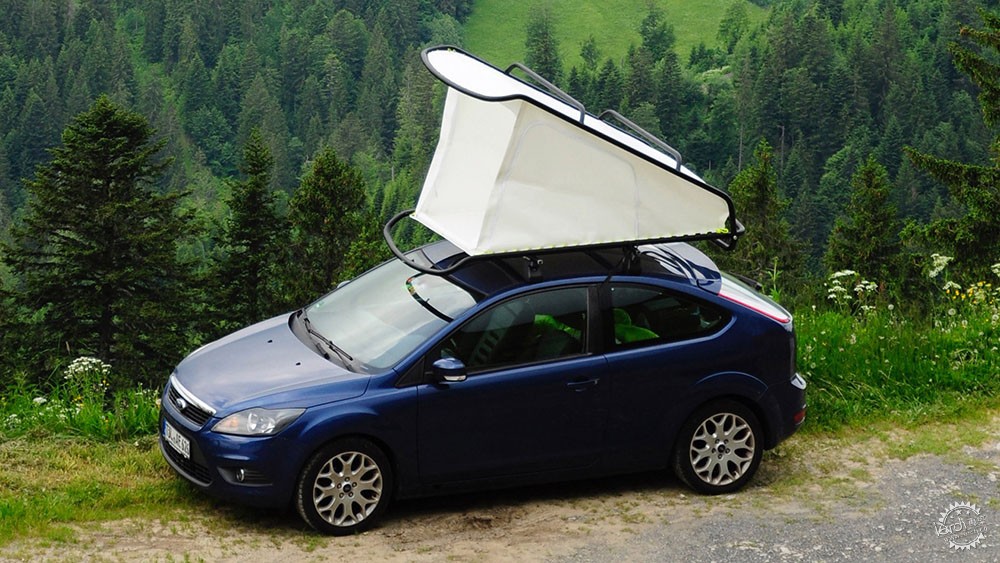
Sebastian Maluska设计的用于汽车上的弹出式帐篷
Sebastian Maluska's pop-up tent can fit on the roof of any car
由专筑网王帅,吴静雅编译
éCAL毕业生Sebastian Maluska设计了一座简单的屋顶式帐篷,该帐篷可以安装在任何汽车的车顶。
Maluska在瑞士勒南(Renens, Switzerland)的洛桑艺术设计大学(Ecole cantonale d'art de Lausanne (éCAL))学习产品设计,他为那些想节省费用或去偏远地区旅行的敢于冒险的年轻人设计了一款帐篷。
éCAL graduate Sebastian Maluska has created a simple rooftop tent that can be fitted to the roof of any car.
Maluska, who studied product design at Ecole cantonale d'art de Lausanne (éCAL) in Renens, Switzerland, created his tent for adventurous young people who want to travel on a budget, or go to remote areas.
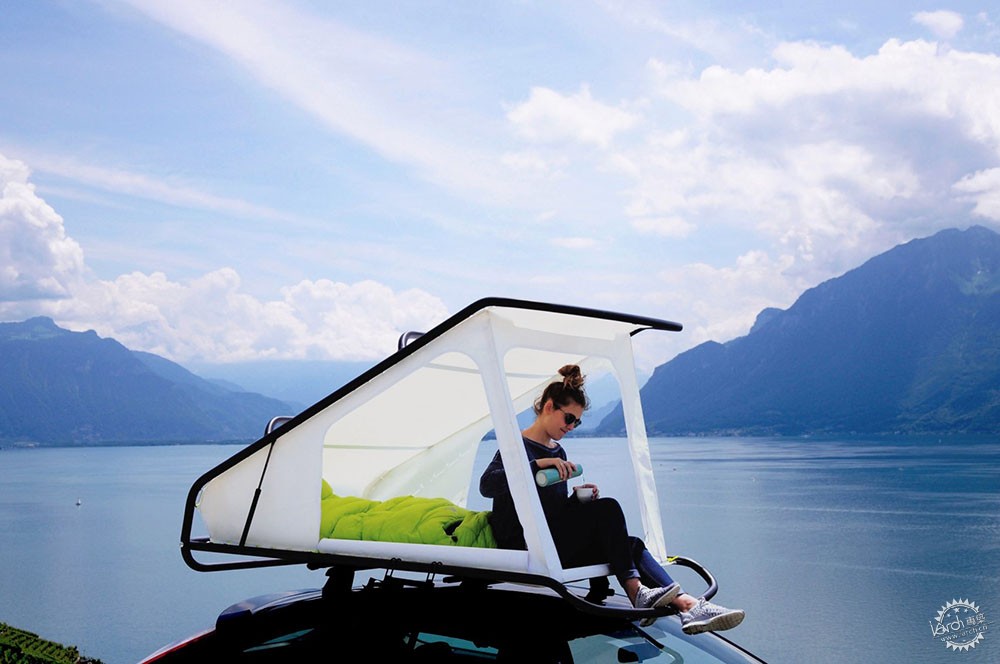
Maluska说:“我花了很多时间在户外做运动,比如滑雪和冲浪。成为首个登顶或首个下水的勇者的感觉非常棒,所以我必须在现场睡觉。”
屋顶帐篷的设计灵感来自帆船使用的材料。它由两个轻型铝框架组成,上面覆盖着防水帆布。
"I spend a lot of time outside doing sport like skiing and surfing," said Maluska. "It is always nice to be the first on the mountain or the first in the water. Therefore I have to sleep right at the spot."
The rooftop tent design was inspired by the materials used in sail boats. It is created from two light-weight aluminium frames covered with waterproof sailing fabric.
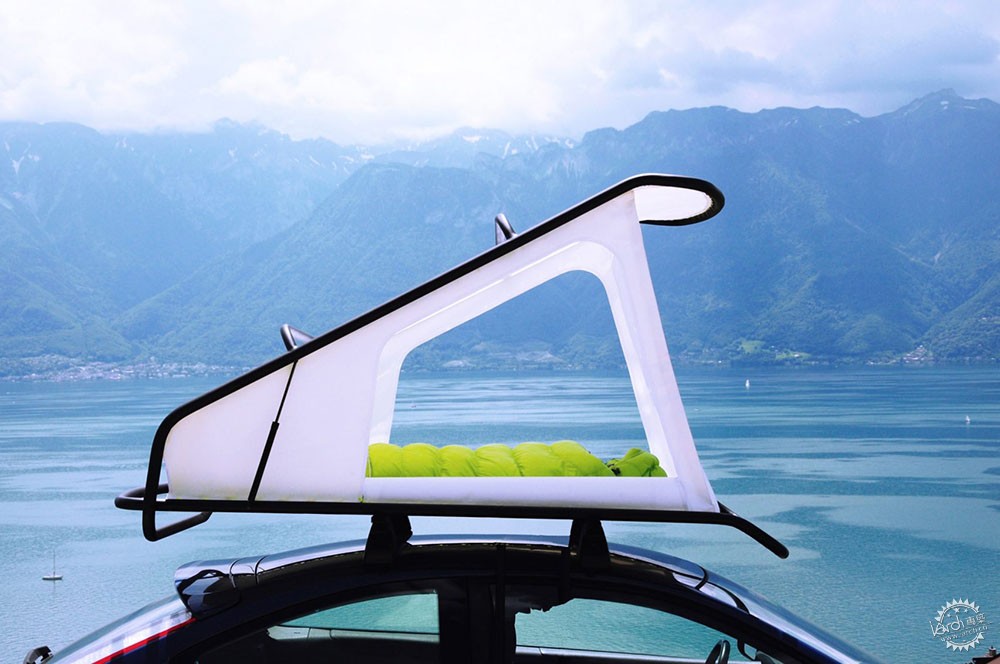
当帐篷打开时,它可以为两个人提供睡眠空间。
梯子储存在帐篷下面的的织物口袋中,将其拉出后可以挂在铝框架的任何一侧。帐篷本身可以通过两侧的拉链开口进入。
When it is open the Nest tent provides sleeping space for two people.
A ladder is stored in a fabric pocket under the sleeping surface of the tent and can be pulled out and hooked on either side of the structure. The tent itself can be accessed through zip-openings on both sides.
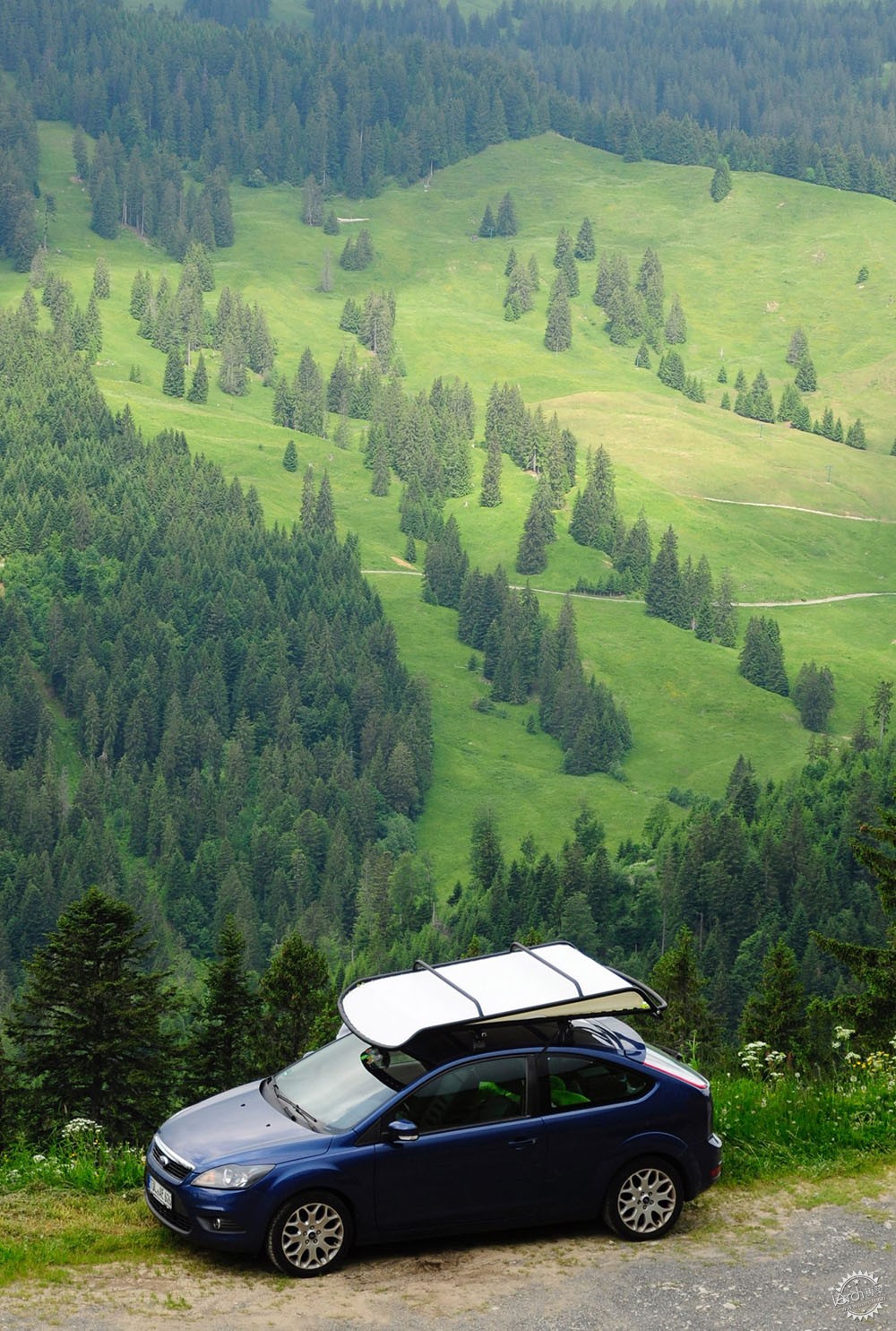
当帐篷闭合后可以用作储存空间,其外形符合空气动力学形状。
Maluska说:“当然,现在已经有用于汽车上的帐篷了。”
“但已有的帐篷非常华丽,又贵又重,结构庞大,非常耗油。”
When closed, the tent forms an aerodynamics shape and can be used as a rooftop storage space.
"Of course there are already existing tents to put on cars," said Maluska.
"But they are constructed in very ornate ways, which makes them heavy, very expensive and – because of their bulky construction – very fuel consuming."
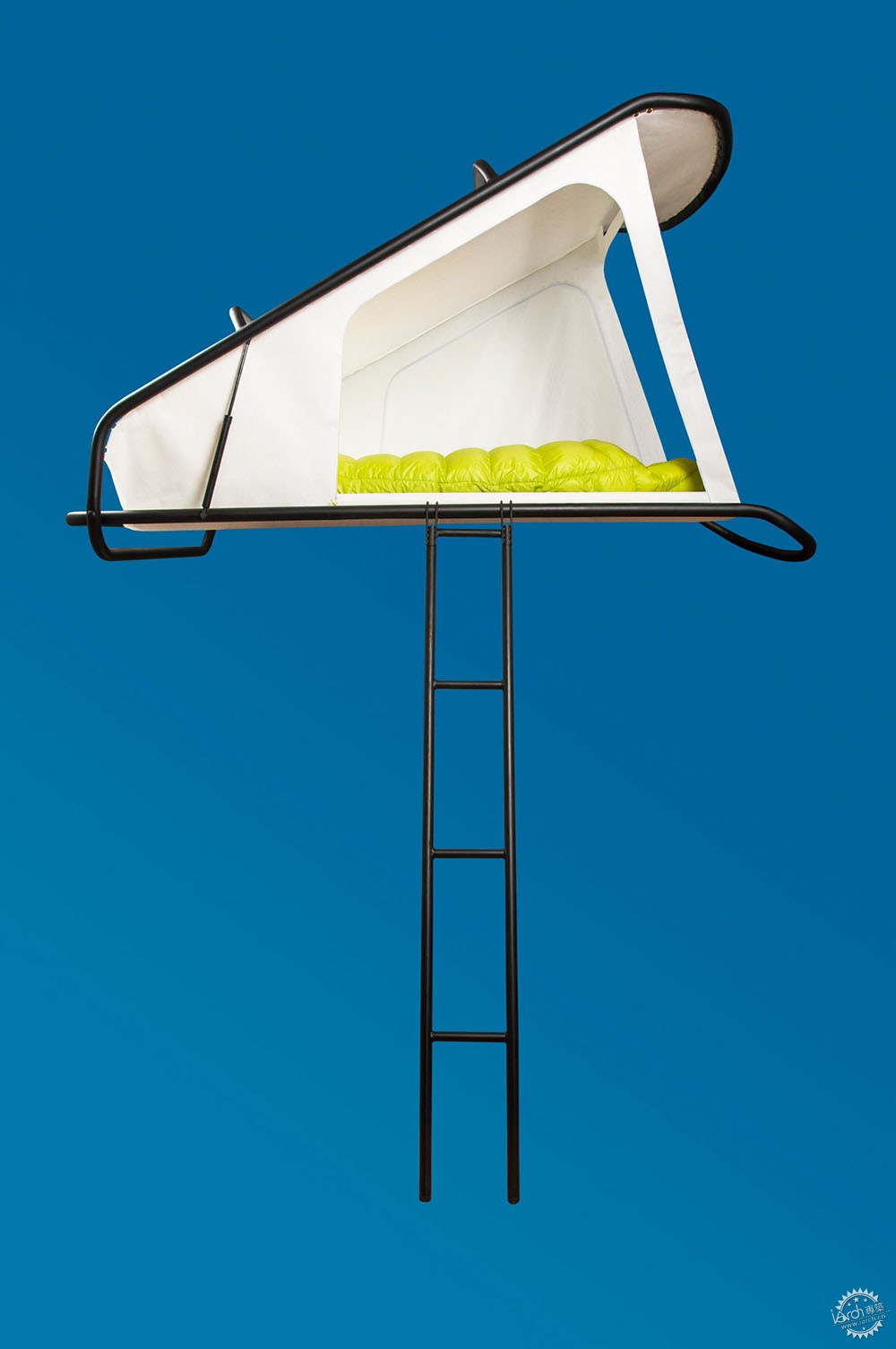
Maluska致力于生产一种新型帐篷,在使用尽可能少的材料的情况下,更简单和便宜。
他向航海界寻求灵感。在沃尔沃海洋竞赛(Volvo Ocean Race)中,他看到水手们睡在一艘船的图像,表面几乎完全是由织物组成的。于是他决定把他的设计建立在这些船所使用的技术上。
Maluska worked to produce a new tent that used as little material as possible, making it much more simple and affordable.
For inspiration he looked to the sailing world. During the Volvo Ocean Race, he saw images of sailors sleeping inside a boat with surfaces made up almost entirely of fabric. He decided to base his design on the technology used by these boats.
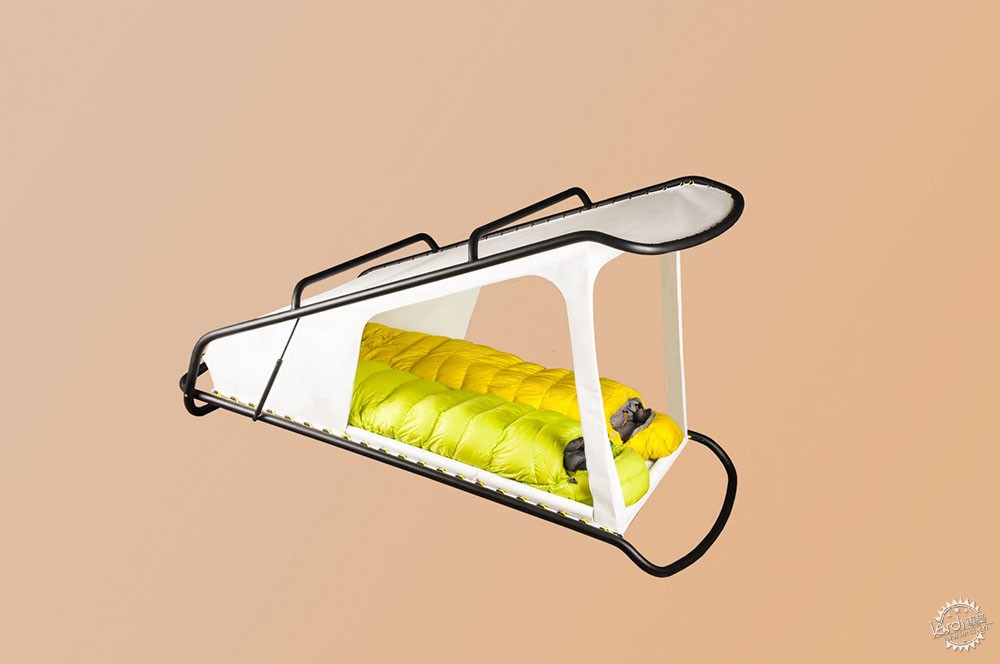
织物本身作为一个结构元素,而它与绳子的结合让它变成可供睡觉的舒适的表面。
为了测试他的1:1原型,Maluska在山里旅行了两夜之旅。主要测试了睡眠表面的舒适性和帐篷的空气动力学特性,以及开启机构和结构的比例。最后证实这一切都令人满意。
The fabric itself acts as a structural element, while its combination with rope makes it a comfortable surface to sleep on.
Maluska tested his 1:1 prototype on a two-night trip into the mountains. His trip tested the comfort of the sleeping surface and the aerodynamics of the tent on the roof, as well as the opening mechanism and the proportions of the structure. He confirmed it all to be satisfying.
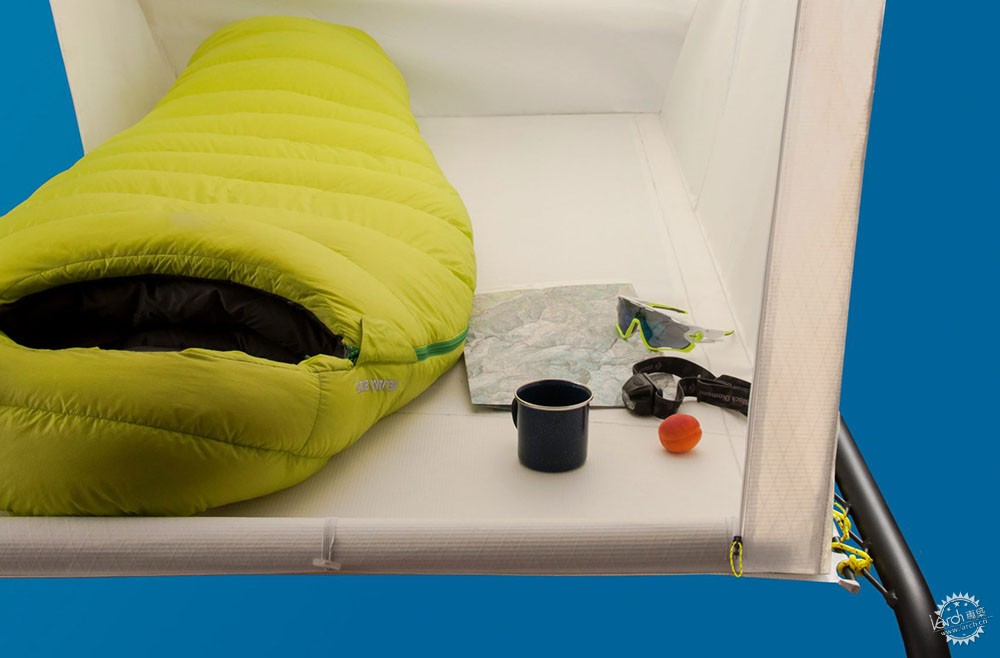
“用于睡觉的表面非常舒服,因为帐篷是从地面上分离出来的,里面没有湿气。我睡觉时开着侧窗,让点点星光撒入帐篷内。”
最近,德国设计师Nils Holger Moormann将一辆大众T6汽车改造成一座移动的房屋。而科罗拉多州(Colorado)的一家初创公司发布了一款现代版的经典美国房车。
"The sleeping surface was really comfortable and because the tent is detached from the floor, there was no moisture in it. I slept with the side windows open so I could see the stars."
German designer Nils Holger Moormann recently transformed a Volkswagen T6 bus into a mobile home, while a Colorado startup has released a modern take on a classic American RV.
|
|
专于设计,筑就未来
无论您身在何方;无论您作品规模大小;无论您是否已在设计等相关领域小有名气;无论您是否已成功求学、步入职业设计师队伍;只要你有想法、有创意、有能力,专筑网都愿为您提供一个展示自己的舞台
投稿邮箱:submit@iarch.cn 如何向专筑投稿?
